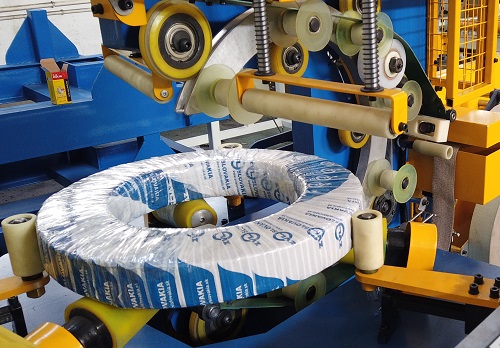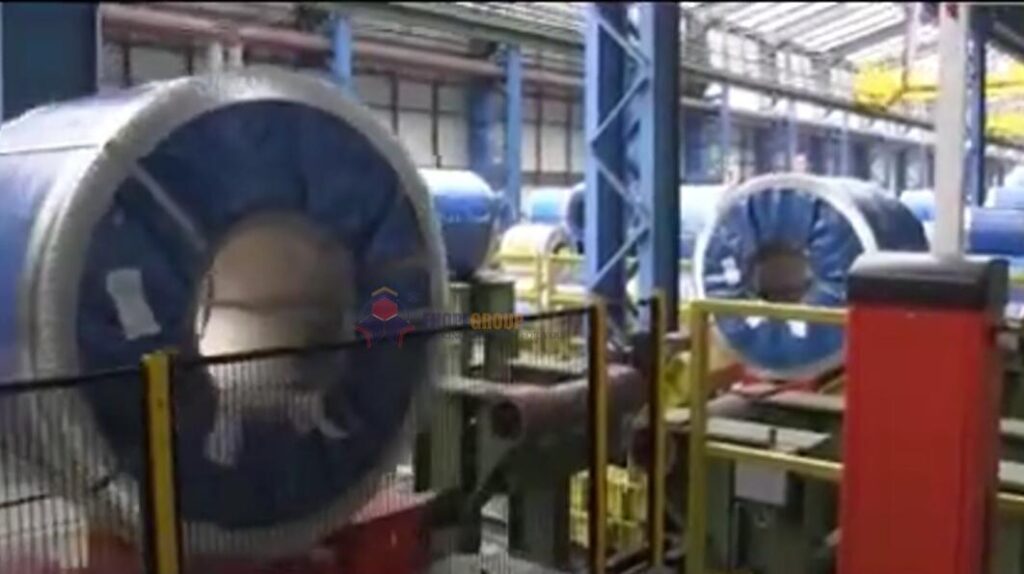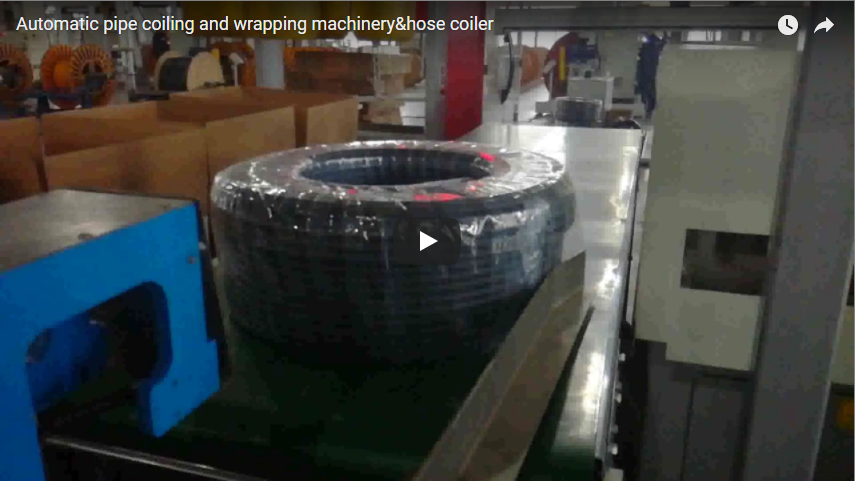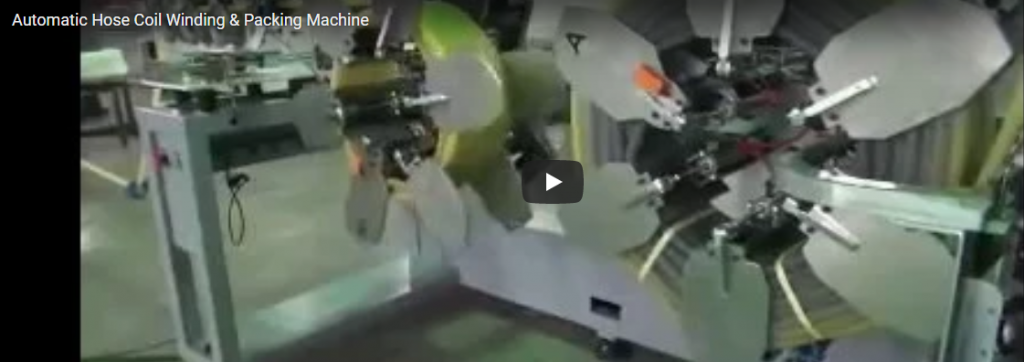Steel coil packaging is a critical process in the manufacturing and logistics industry. These coils are often heavy and bulky, which makes handling and packaging them a potentially hazardous task if the right precautions are not taken. Ensuring the safety of workers and protecting the product itself from damage are top priorities. In this article, we will discuss five key steps you can take to enhance safety in the steel coil packaging process. By following these steps, you can minimize the risk of accidents, improve productivity, and reduce costs associated with workplace injuries or damaged goods.
1. Conduct Comprehensive Risk Assessments
The first and perhaps most important step in improving safety is to conduct a comprehensive risk assessment. This involves identifying potential hazards throughout the entire packaging process. From handling and moving steel coils to wrapping, strapping, and transporting, every stage should be evaluated for risks. These assessments help businesses understand where accidents are most likely to occur and what can be done to prevent them.
- Evaluate Equipment and Machinery: Ensure that all equipment, such as wrapping machines, strapping tools, and forklifts, are regularly inspected and properly maintained. Malfunctioning machinery is one of the leading causes of accidents in the workplace.
- Consider Environmental Factors: Temperature, lighting, and workspace layout can all contribute to risks in the packaging area. Poor visibility or cramped conditions can make it difficult for workers to navigate safely, leading to accidents.
By conducting these assessments, companies can prioritize which areas of the process need improvement and develop targeted strategies to reduce the risk of injury.
2. Implement Proper Training Programs for Workers
Having the right machinery is important, but ensuring that your workers know how to use it safely is just as critical. Proper training programs are essential for minimizing the risks associated with steel coil packaging. Employees should be trained in both general safety practices and specific equipment usage to prevent accidents.
- Train on Equipment Operation: Workers should be thoroughly trained in the use of any machinery involved in the packaging process, such as coil wrapping machines or forklifts. This ensures that they understand how to operate the equipment correctly and safely, reducing the likelihood of equipment-related accidents.
- Safety Protocols for Manual Handling: While automated packaging systems reduce the need for manual handling, workers may still be required to move coils manually or assist with certain aspects of packaging. It’s essential that employees are trained in proper lifting techniques and ergonomic practices to avoid injury.
- Continuous Education: Safety training should not be a one-time event. Regular refresher courses can help workers stay up-to-date on the latest safety protocols and changes in machinery operation. This is particularly important in environments where the packaging process may evolve or new technology is introduced.
3. Utilize Automated Packaging Systems
One of the most effective ways to enhance safety in the steel coil packaging process is by adopting automated coil packaging systems. Automation not only increases efficiency and consistency but also drastically reduces the need for workers to be physically involved with the coils, thus minimizing the risk of injury.
- Reduced Manual Handling: Automated systems handle much of the heavy lifting, strapping, and wrapping tasks that would otherwise require workers to be in close proximity to the steel coils. This reduces the risk of musculoskeletal injuries, which are common in industries that involve heavy materials.
- Consistent and Secure Packaging: Automation ensures that each coil is packaged in a consistent and secure manner. This reduces the likelihood of accidents caused by improperly wrapped or unstrapped coils during transport. Machines are programmed to apply the exact amount of force needed to secure the coils without damaging them or risking safety.
- Enhanced Machine Safety Features: Modern automated systems come equipped with safety features such as emergency stop buttons, sensors that detect human presence, and fail-safes that prevent malfunction-related accidents. These features make the packaging process safer and more reliable overall.

4. Implement Proper Storage and Transportation Practices
Safety in steel coil packaging doesn't end when the coil is wrapped and strapped. Proper storage and transportation are equally important to ensure safety throughout the entire supply chain. In fact, many accidents occur during the movement or storage of steel coils, especially when they are improperly secured or handled.
- Use Appropriate Storage Racks: Steel coils are often stored in racks to prevent them from rolling or shifting, which can cause accidents. Ensure that the storage racks used are designed to handle the weight and size of the coils. Additionally, coils should be properly secured in these racks to prevent movement during storage.
- Secure Coils During Transportation: When moving steel coils, whether within a facility or for long-distance transport, it is essential to ensure that they are securely fastened to prevent shifting. Securing coils with straps and making use of specialized coil transport systems can help avoid dangerous accidents during transit.
- Routine Inspections: Regularly inspect storage racks, forklifts, and any other equipment used in transporting or storing coils to ensure they are in good working condition. Routine maintenance of storage equipment can help prevent unexpected failures that lead to accidents.
By focusing on proper storage and transportation practices, businesses can prevent many common safety hazards associated with the movement of heavy steel coils.

5. Emphasize the Importance of Personal Protective Equipment (PPE)
While automation and training can significantly reduce the risks associated with steel coil packaging, there will always be some level of physical interaction between workers and the product. Ensuring that workers have and consistently use Personal Protective Equipment (PPE) is essential for reducing injury risks.
- Appropriate PPE for Packaging Tasks: Employees involved in the packaging process should wear appropriate PPE, including hard hats, safety gloves, steel-toed boots, and protective eyewear. These protective items safeguard workers from potential injuries related to coil handling, machinery, or environmental factors such as falling objects.
- Ergonomic Considerations: Workers who are lifting or moving steel coils manually should wear back support belts to reduce strain on their lower backs. Ergonomically designed PPE can help prevent musculoskeletal injuries that are common when handling heavy objects.
- Regular PPE Inspections: PPE should be inspected regularly to ensure that it is still effective. Worn-out or damaged protective gear can provide a false sense of security and may fail to protect workers in case of an accident.
Emphasizing PPE usage and ensuring that all workers are adequately equipped is one of the simplest yet most effective ways to enhance safety in the steel coil packaging process.
Conclusion: Prioritizing Safety in Steel Coil Packaging
In the steel coil industry, safety is not something that can be taken lightly. The heavy weight and large size of steel coils make handling and packaging them a potentially dangerous task if the proper precautions are not in place. By implementing the five key steps discussed in this article—conducting risk assessments, proper training programs, utilizing automated systems, ensuring safe storage and transportation, and emphasizing the use of PPE—businesses can significantly reduce the risk of accidents and create a safer working environment for their employees.
As technology evolves, automation will continue to play a crucial role in enhancing safety in steel coil packaging. However, a holistic approach that includes proper training, regular maintenance, and strict adherence to safety protocols will ensure that companies can achieve both efficiency and safety in their operations. By making safety a priority, businesses not only protect their workers but also improve their overall productivity and profitability in the long run.






